Home › Forums › 20th Century › New Yorker on the Hudson
- This topic has 13 replies, 3 voices, and was last updated 2 months, 2 weeks ago by
blackbird1.
-
AuthorPosts
-
-
July 27, 2025 at 10:16 am #4858
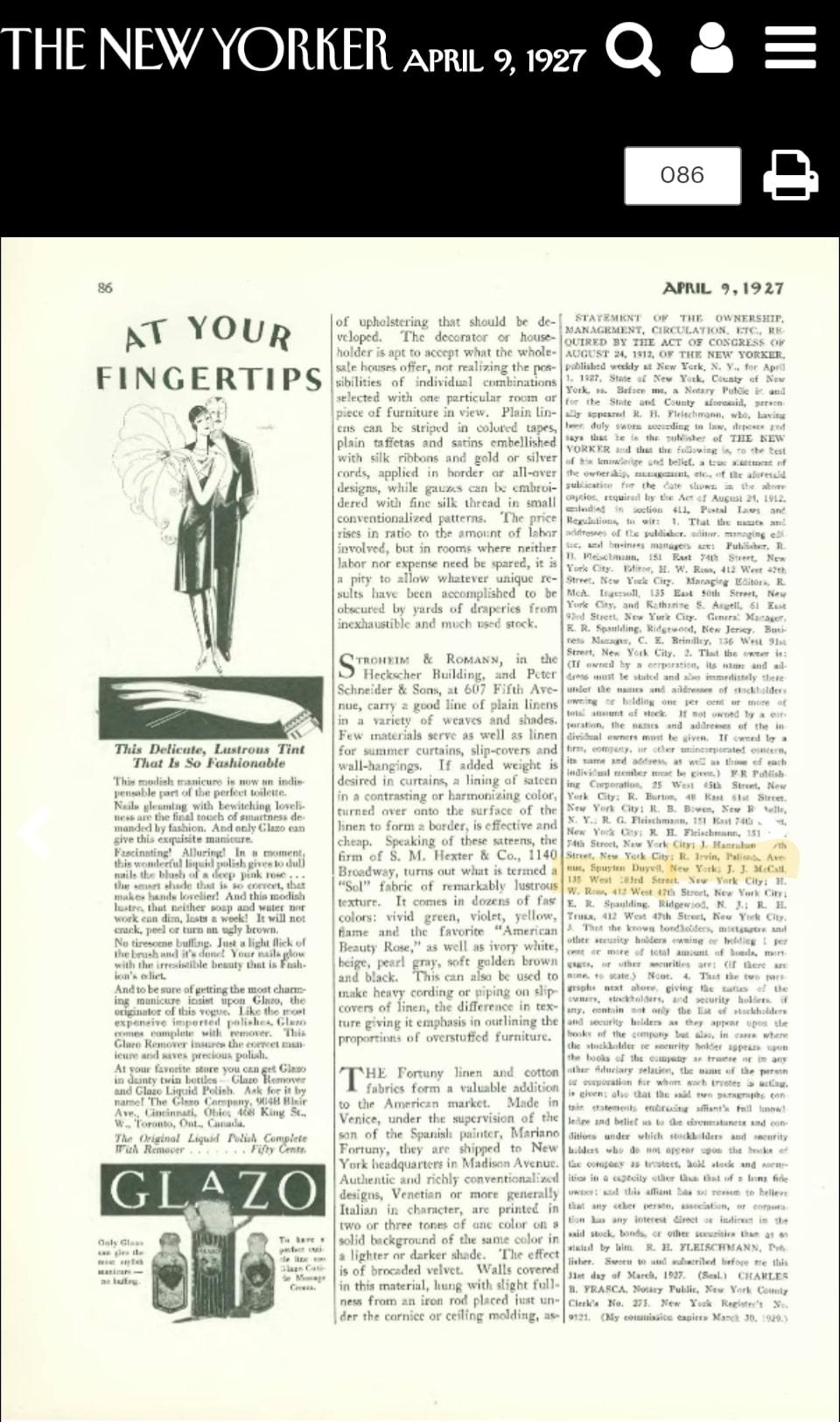
In this 1927 issue of the New Yorker, I discovered a Spuyten Duyvil address for one of the founders, the inimitable graphic and cartoon genius Rhea Irvin.
Rea Irvin (August 26, 1881 – May 28, 1972) was an American graphic artist and cartoonist. He served de facto as the first art editor of The New Yorker.
-
July 27, 2025 at 10:23 am #4859
-
August 3, 2025 at 6:06 pm #4861

-
August 3, 2025 at 6:09 pm #4862
I’ve come across Rea Irvin and family in my research but haven’t been able to put them in any of the houses I’m looking into. Here they are on Kappock in 1930. I had no idea he was an originator of the New Yorker. Cool!
Jackie Z. -
August 9, 2025 at 1:17 pm #4885
-
August 9, 2025 at 1:58 pm #4886
That’s the 1930 Census…
-
August 12, 2025 at 7:12 am #4906
This is what I have found so far. Here is a a blurb from the NY times re a real estate transfer from the Estate of Isaac Johnson to Rea Irvin on September 6, 1930, “southeast of Palisade Avenue”
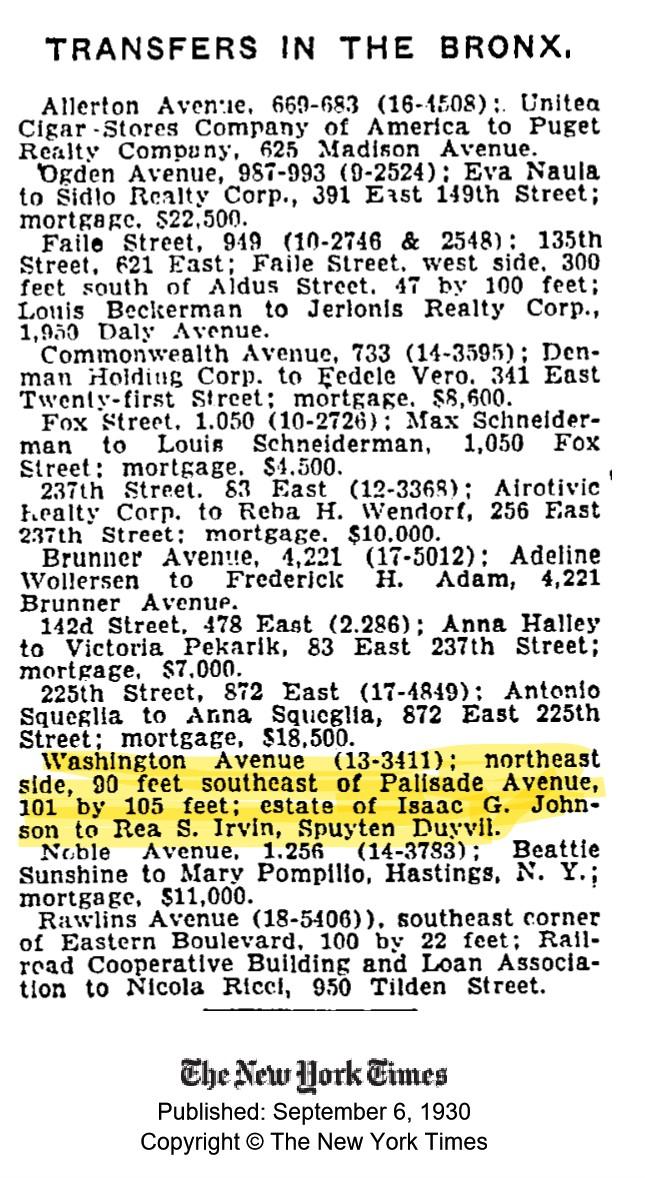
-
August 12, 2025 at 7:20 am #4908
And this is kind of fun: an article about a court fight about a property owned by the Irvin’s that they rented to a famous Hollywood Actor George Alexander Coulouris (1 October 1903 – 25 April 1989). He was an English film and stage actor. He was perhaps best known for his collaborations with Orson Welles, most notably Citizen Kane.
“Court Refuses to Evict Nine-Year Tenant To Provide House for Owner’s Daughter
Mrs. Rea Irvin, wife of the illustrator, of Newtown, Conn., learned yesterday in Bronx Municipal Court of the vagaries of the housing situation when she tried unsuccessfully to evict a tenant from her home in Spuyten Duyvil, which she wanted to give to her recently married daughter.
It was a complicated case. The trial revealed that the original tenant, a Hollywood actor, had sublet the four-room studio home to an author, who in turn sublet it for the summer to a nuclear physicist.
Mrs. Irvin originally leased a large house at 775 Kappock Street and the adjacent studio home at 777 to George Coulouris, who has maintained tenancy of the larger home although he has lived for the last several years in Hollywood. Nine years ago the actor sublet the studio home to Dr. Henry W. Wells, author and Professor of Classical and Medieval Literature at Columbia University.
Dr. Wells said he paid his rent to Mr. Coulouris, who in turn paid Mrs. Irvin. This summer, Dr. Wells said, he went to Maine to write a book. He sublet the home to Dr. Philip Fleming, scientist from Tennesse. Then, according to Abraham Wilson, Dr. Wells’ attorney, Dr. Fleming was paying Dr. Wells, who was sending money to Hollywood, whence Mr. Coulouris was forwarding the rent to Connecticut.
Mrs. Irvin told Justice Christopher McGrath that her son-in-law, John T. McConnell, had recently been discharged from the Navy and she wanted her daughter and son-in-law to have the smaller home because they had no home of their own.
Justice McGrath ruled that Dr. and Mrs. Wells were not to be evicted because they had occupied the premises for nine years with the obvious knowledge of the landlord.”
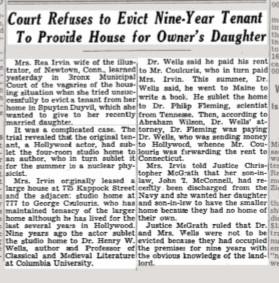
-
August 12, 2025 at 7:33 am #4909
As yet the “nuclear physicist” was (more research to be done), but Mr. Henry H. Wells, lived at
lived at 777 Kappock until 1978.
”
HENRY W. WELLS, TAUGHT LITERATURE AT COLUMBIA
Dr. Henry W. Wells, retired professor of English and comparative literature at Columbia University and curator of the Brander Matthews Museum there, died Wednesday in Montefiore Hospital in the Bronx. He was 83 years old and lived at 777 Kappock Street in the Riverdale section of the Bronx.
Dr. Wells, who retired in 1965; was the author of more than 25 books on literature, poetry and the drama. He was member of the graduate department at Columbia for 40 years. In addition to his writings on British and American poetry, he discussed Asian literature.
His articles dealt with Sanskrit dramas and with the traditional and classical dramas of China, India and Japan. In series of studies, he suggested- analogies between Chinese poets and poets of Britain and America. He contributed to journals in India, Taiwan and Japan.
He was secretary of the American Society for Theater Research and of the United States Institute for Theater Technology and director of the Committee for Refugee Education.”
-
August 12, 2025 at 7:56 am #4910
A not politically correct story concerning Rhea Irvin in Spuyten Duyvil, and a fight between his and a neighbors dog took place in 1925, which means the 1930 property was not his primary home, or at least not originally.
The story is sad, but shows us how animals about pets have changed in the 100 years since this occurred.
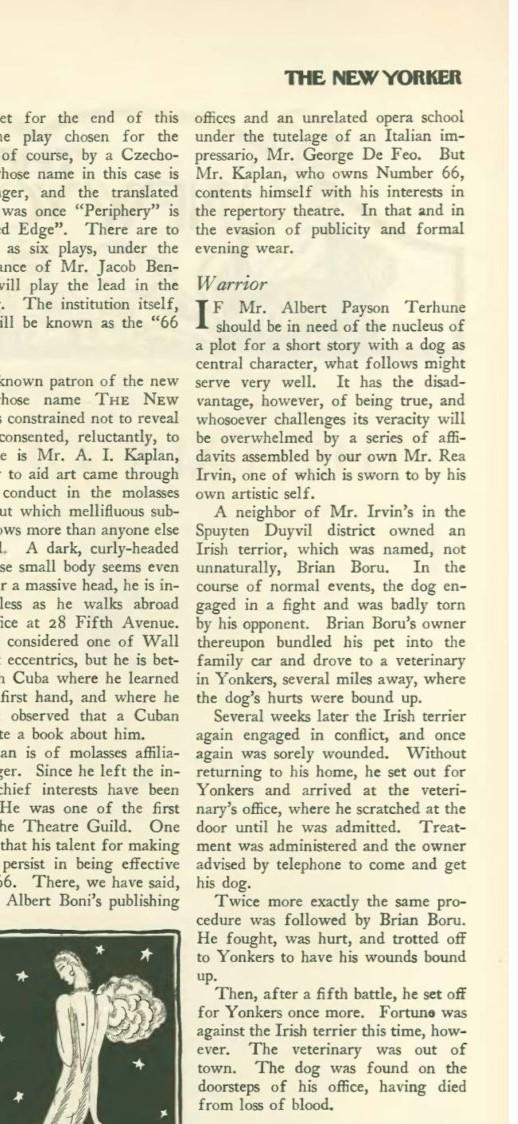
-
August 12, 2025 at 12:49 pm #4911
Thanks for this, Stephanie, as always.
I suppose that we can infer that no “no-sublet” clause existed and that the lease was periodically renewed in good faith, since it wasn’t mentioned in the article. As far as I know, a tenant in good standing cannot be evicted until end of the lease. I wonder if that eventually happened. Housing was in great demand after WWII. Willian J. Levitt jumped on the opportunity with the Levittown development on Long Island beginning in 1947 and then in Pennsylvania and still later in New Jersey.
Blackbird1 shows us the 1930 Census indicating Rea Irvin living at an address without a street number on Kapock St on April 27th of that year. How could he not have had that as his primary address unless he was pulling some skulduggery? As you point out, on September 6th of that year the NYT published that a transfer of title of the Berrien-Johnson property had occurred sometime before that date (logically speaking) to Rea. He might have been planning to move when the census was taken or shortly thereafter when the notice of sale was announced, or perhaps it was just a serendipitous spur-of-the-moment thing for him.
I found the “Warrior” essay regarding the Irish Terrier interesting. Smart dog who knew where to get first-aid! Is this from a 1925 issue of The New Yorker? If so, I don’t understand how this demonstrates Rea not having the Kapock house, which is in the Spuyten Duyvil district, as his primary location in 1930. Also, I’m not sure that the neighbor’s dog, the Irish Terrier, fought Rea’s dog; the essay mentions “an opponent”. I’m sure that I have probably missed something. Would you point me in the right direction?
Thanks again for all this.
-
August 16, 2025 at 6:21 pm #4930
Here are a few more pieces of info: A 1932 passenger list indicating the Irvins address at Kappock and Palisade; a listing from the city register of a Sept. 5, 1930 transaction between Johnson and Irvins for lot 370 (Old block no. 3411); and a portion of a 1921 map that shows lot 370 on Kappock near Palisade. Could this be the property at issue in Widow Irvin’s lawsuit?
That’s all I got!
Stephanie, your stories bring the neighborhood to back to life! Love them!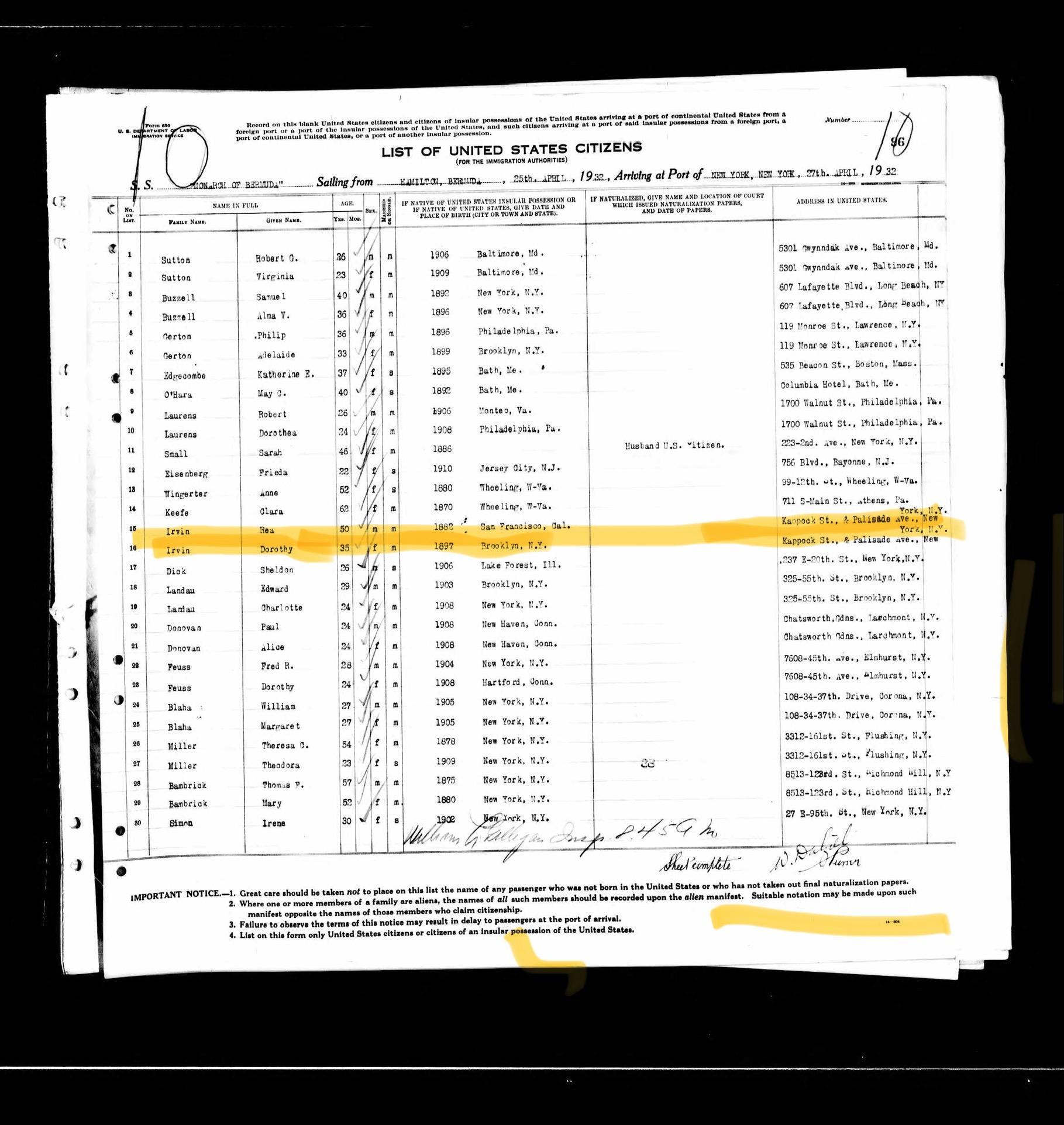
-
August 16, 2025 at 6:22 pm #4931
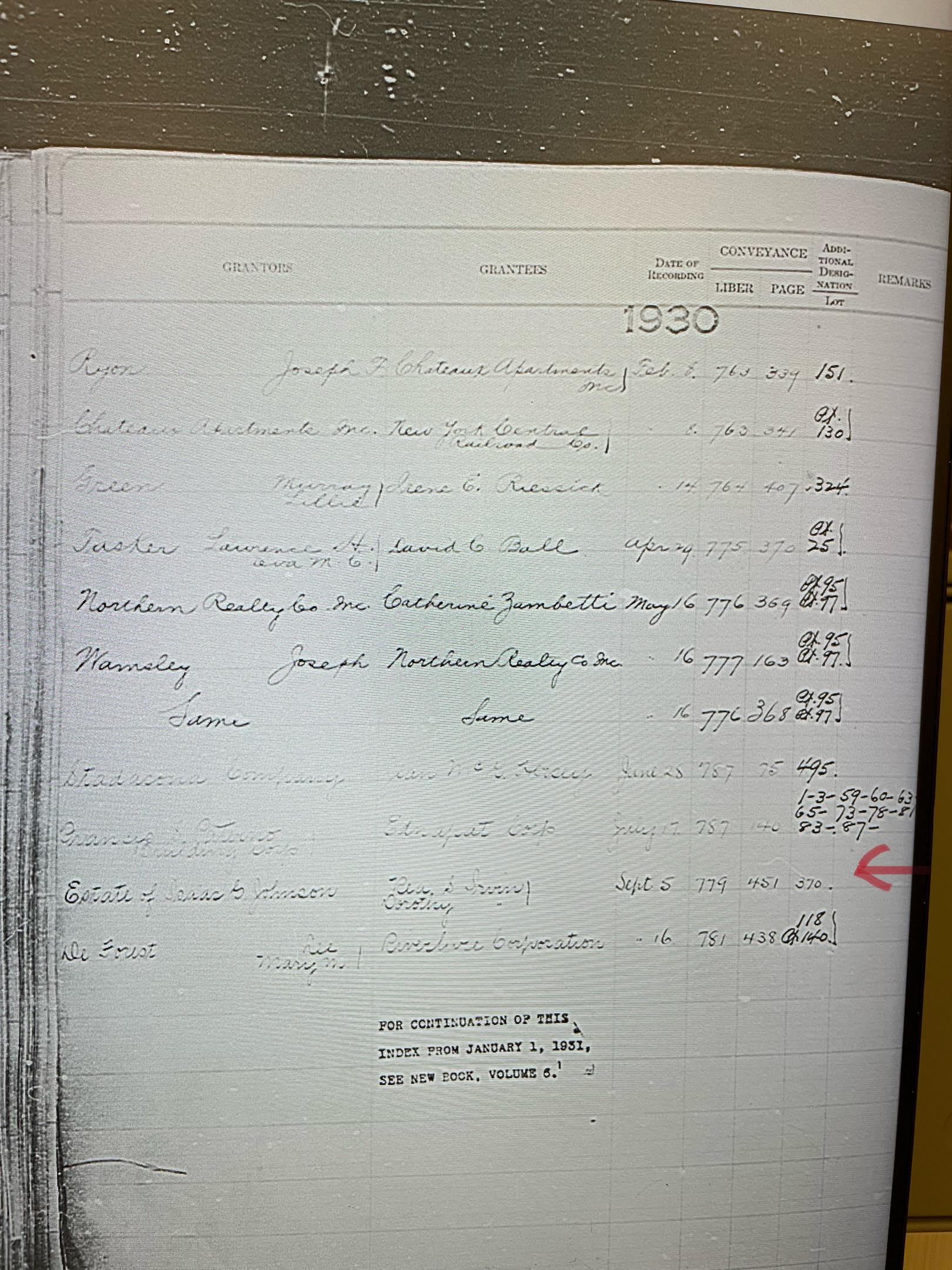
-
August 16, 2025 at 6:25 pm #4932
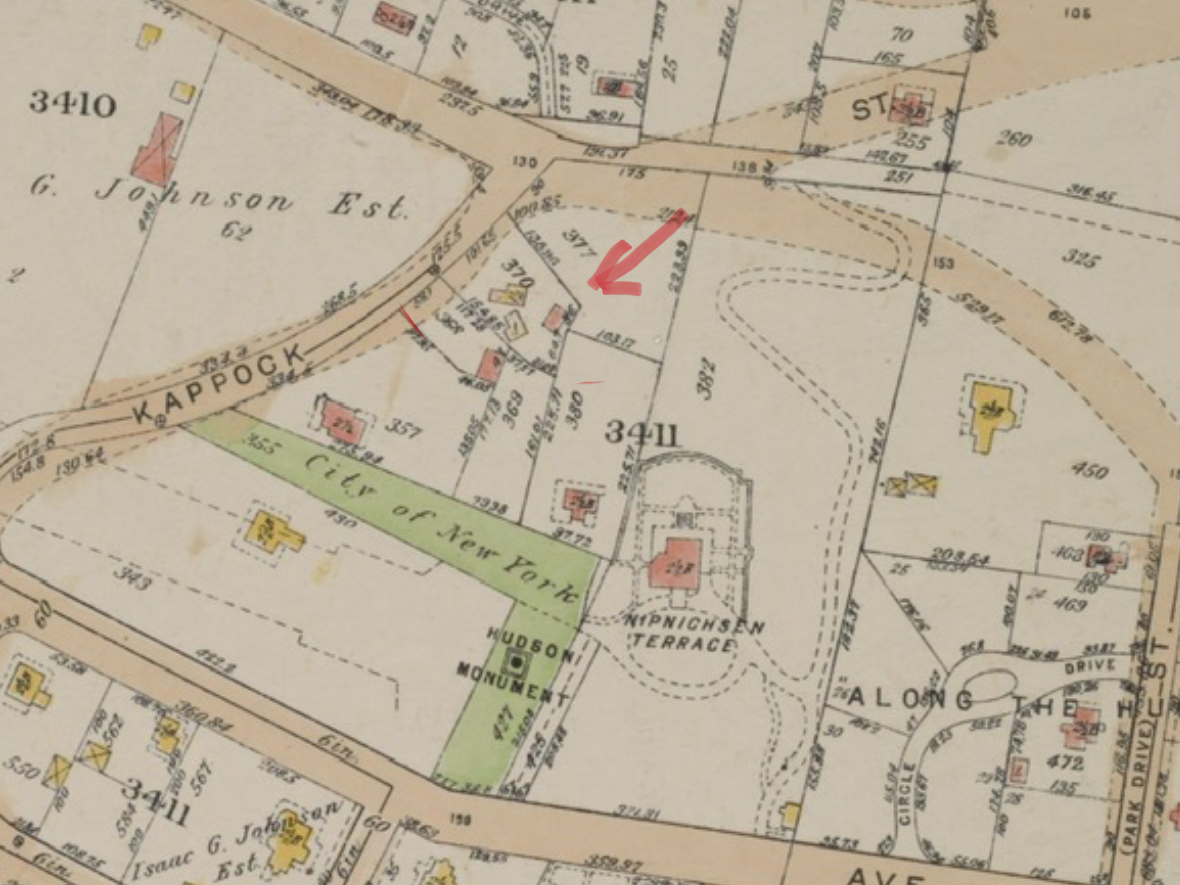
-
-
AuthorPosts
- You must be logged in to reply to this topic.
